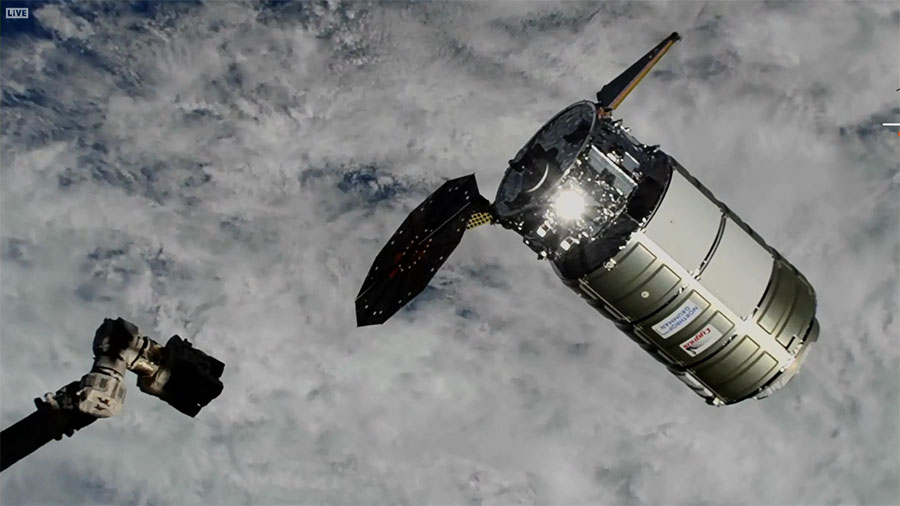Northrop Grumman’s Cygnus installed on space station despite solar array trouble

- Country:
- United States
The Northrop Grumman Cygnus cargo spacecraft has been successfully installed on the International Space Station despite the trouble with the deployment of the second solar array.
Cygnus will remain at the space station until late January 2023 before it departs for a destructive re-entry into Earth's atmosphere.
The space freighter launched Monday, November 7, on an Antares rocket from NASA's Wallops Flight Facility, Virginia, carrying a supply of 8,200 pounds of scientific investigations and cargo to the orbiting laboratory.
Following the launch, the spacecraft successfully deployed one of its two solar arrays. Northrop Grumman and NASA decided not to deploy the second solar array after initial attempts to deploy it were unsuccessful.
.@NorthropGrumman's #Cygnus space freighter was installed on the station at 8:03am ET today and it will stay there until late January for cargo operations. https://t.co/5amMIjgL9i
— International Space Station (@Space_Station) November 9, 2022
As of now, five spaceships are parked at the space station including Cygnus, the SpaceX Crew Dragon Endurance and Russia's Soyuz MS-22 crew ship and the Progress 81 and 82 resupply ships.
The crew aboard the space station is now gearing up for a series of spacewalks set to begin this month. NASA Flight Engineers Frank Rubio and Josh Cassada are preparing for a November 15 spacewalk to ready the orbiting lab for its third and fourth rollout solar arrays. Cygnus delivered a new mounting bracket that will enable the installation of one of these solar arrays.
Meanwhile, two Russian cosmonauts, Commander Sergey Prokopyev and Flight Engineer Dmitri Petelin, have also been preparing for a different set of spacewalks to install a radiator and airlock on the Nauka science module.










